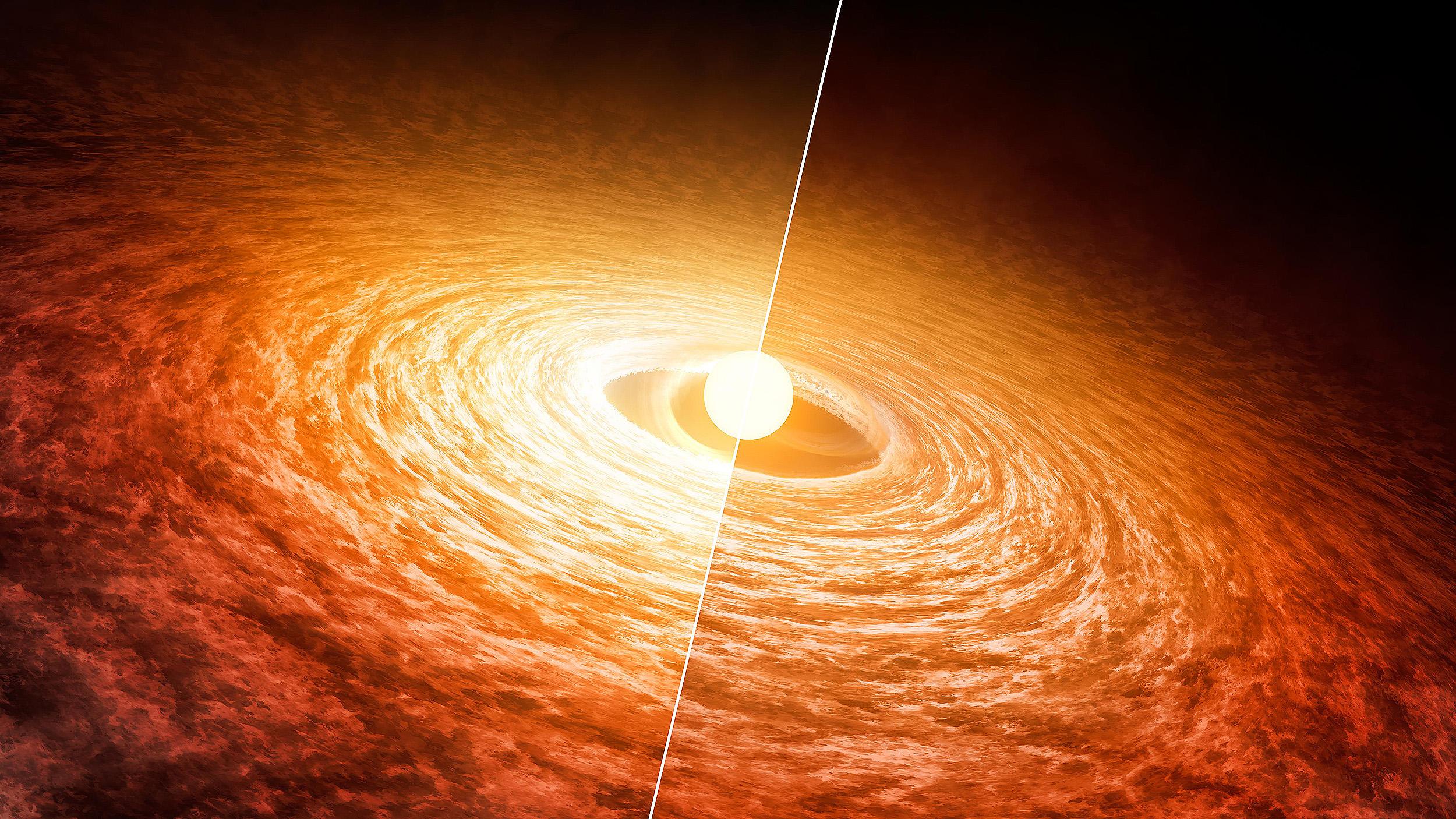Nearby TRAPPIST-1 exoplanet may have a rich atmosphere after all

- Astronomers are probing whether Earth-like exoplanets, particularly those orbiting the cool M-dwarf star TRAPPIST-1, have atmospheres necessary for life, using the James Webb Space Telescope (JWST).
- Initial observations of the exoplanet TRAPPIST-1 c indicated it might lack a significant atmosphere, ruling out a dense CO2 layer similar to Venus, and suggesting a barren or thinly gaseous state.
- Further investigations using advanced simulations, however, raised possibilities of substantial oxygen or steam atmospheres, challenging initial findings and highlighting the complexity and potential diversity of exoplanetary environments.
Atmospheres — do Earth-like alien planets have them or not? This is the killer question currently facing astronomers. In this context, “Earth-like” means terrestrial (i.e. rocky worlds) planets close enough to Earth’s mass and other conditions that we might imagine them hosting the holy grail of astrobiology: an alien biosphere. But you can’t have a biosphere unless you first have an atmosphere for all that life to breathe. And while finding signatures of biospheres (i.e. biosignatures) is going to be hard even for the James Webb Space Telescope (JWST), finding evidence for terrestrial exoplanet atmospheres is definitely something it can do. That’s why everyone got so excited last year when JWST started dropping new data on astronomers’ favorite Earth-like exoplanets.
We were excited, but, to be truthful, also a little bummed out. Today’s story covers why that disappointment may have been a bit premature.
TRAPPIST-1
The biggest news of the past year came with observations of the TRAPPIST-1 system. TRAPPIST-1 is a small cool star (aka an “M-dwarf star,” or a “red dwarf star”). It has a full family of seven orbiting planets. Best of all, the orbital distances for these worlds span the entire range of possibilities, from too-hot inner worlds to frozen outer worlds and, most importantly, a few planets in the “Goldilocks zone” where temperatures are just right for liquid water to exist on the surface. Using the JWST, scientists have been marching outward looking for atmospheres on successively distant (from the star) TRAPPIST-1 worlds.
No atmosphere was found for the innermost planet, TRAPPIST-1 b. This wasn’t a big bummer because it was so close to the star that most astronomers thought its blazing hot surface could never retain a blanket of molecules. Hopes were higher for TRAPPIST-1 c, however. Some folks were hoping it might be a kind of Venus twin. TRAPPIST-1 c has a mass that’s slightly higher than Venus and gets about the same dose of stellar energy. Like Venus, TRAPPIST-1 c is not in its star’s Goldilocks zone of habitable orbits. But considering that Venus’ atmosphere is heavy in carbon dioxide, astronomers were hoping that maybe TRAPPIST-1 c had its own thick layer of gas.
Sadly, the JWST results ruled out a Venus-like CO2 atmosphere. Worse, they seemed to point to either bare rock (i.e. no atmosphere at all) or a wimpy thin layer of gas. Given how important finding any kind of atmosphere on terrestrial exoplanets is to astrobiologists, the results for TRAPPIST-1 c were a bit sad.
But science marches forward by constantly refining the understanding of its own findings. After the initial JWST results for TRAPPIST-1 c were published, Andrew Lincowski, Vikki Meadows, and collaborators went back and reexplored exactly what kind of atmospheres could be consistent with what the JWST saw. Their results showed there could be more to TRAPPIST-1 c than we first expected.
Reviving atmospheric hopes
The team used computer models of planets with different kinds of atmospheres and then simulated what JWST would observe from these worlds. These tools were a step above what had first been used to interpret the TRAPPIST-1 c results. Three different kinds of worlds were explored: ones with either Venus-like thick CO2 atmospheres, oxygen-dominated atmospheres, or water-rich “steam” atmospheres. Confirming the previous results, Lincowski and company found that TRAPPIST-1 c probably does not have a thick CO2 blanket. But the team also found that fairly thick oxygen atmospheres with 1 to 10 times Earth’s surface pressure fit well within the JWST measurements’ margins of error. In addition, steam atmospheres, where a runaway greenhouse effect is driving liquid water into the atmosphere, were also possible.
TRAPPIST-1 c hosting either a thick oxygen atmosphere or a relatively thick steam atmosphere would be scientifically awesome. While we might not expect either kind of world to host life (but who knows), what matters is diversity. The most important job for astrobiology and exoplanet science right now is to simply answer the question: How varied are the worlds in the galaxy? Are they mostly dead and airless worlds? Are they mostly worlds with atmospheres but of different compositions? While the first cut at TRAPPIST-1 c might have tilted toward the first possibility, the results of Lincowski tell us that nature may be more fecund and imaginative than we previously thought.
Which view is right? In the end, there is only one way to find out. Go look harder. And that’s exactly what we’re doing. Stay tuned!





